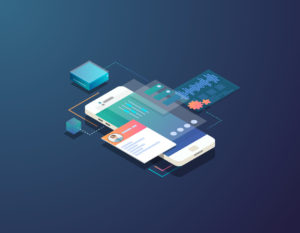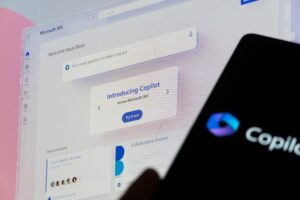
The business intelligence, automation, and enterprise application landscape is changing dramatically.
In the previous incarnation of enterprise technology, line-of-business owners were forced to choose between pre-baked commercial off the shelf (COTS) software, which was difficult to customize and often did not truly meet the business’s unique needs, or custom solutions that (though flexible and often tailor-made to the business needs of the moment) cost more and were far riskier to develop and deploy.
Furthermore, certain classes of applications do not have a COTS answer, nor do they justify the cost of custom software development. In the chasm between the two arose a generation of quasi-apps: the homegrown Excel spreadsheets, Access databases, Google docs, and all manner of other back-of-the-napkin “systems.” End users developed these quasi-apps to fill the gaps between the big software IT provided and what users actually needed to do their jobs.
We’ve all been there: The massive spreadsheet that tracked a decade’s worth of employee travel but was always one accidental click away from oblivion. Or the quirky asset management database living on your officemate’s desktop (and still named after an employee who left the company five years ago); the SharePoint site full of sensitive HR data, or the shared network drive that had long been “shared” a bit too liberally. A generation of do-it-yourself workers grew up living on the edge of catastrophe with their quasi-apps.
Thankfully, three trends have converged to shatter this paradigm in 2019, fundamentally changing the relationship between business users, technologists, and their technology.
Connectivity of Everything
The new generation of business applications is hyper-connected to one another. They allow for connections between business functions previously considered siloed, unrelated, or simply not feasible or practical. This includes travel plans set in motion by human resources decisions, medical procedures scheduled based on a combination of lab results and provider availability, employee recruiting driven by sales and contracts.
Citizens’ Uprising
Business users long settled for spreadsheets and SharePoint, but new “low-code/no-code” tools empower these “citizen creators” with the capability to build professional grade apps on their own. Airport baggage screeners can develop mobile apps that cut down on paperwork, trainers and facilitators put interactive tools in the hands of their students, and analysts and researchers are no longer dependent on developers to “pull data” and create stunning visualizations.
New Ways of Looking at the World (& Your Data)
This isn’t just about business intelligence (BI) and data visualization tools far outpacing anything else that was recently available. It’s not even just about business users’ ability to harness and extend those tools. This is about the ability of tools like Microsoft Power BI to splice together, beautifully visualize, and help users interpret data that their organizations already own — data to which you’ve connected using one of the hundreds of native connectors to third-party services, and data generated every second of every minute of every day from the connected devices that enable the organization’s work.
It’s an exciting time. I’ve explored these trends further, plus how Microsoft’s Power Platform has become the go-to platform for organizations mastering the new landscape in my whitepaper, Microsoft’s Power Platform and the Future of Business Applications. We’re way past CRM. I hope you’ll read it and share your thoughts with me!






